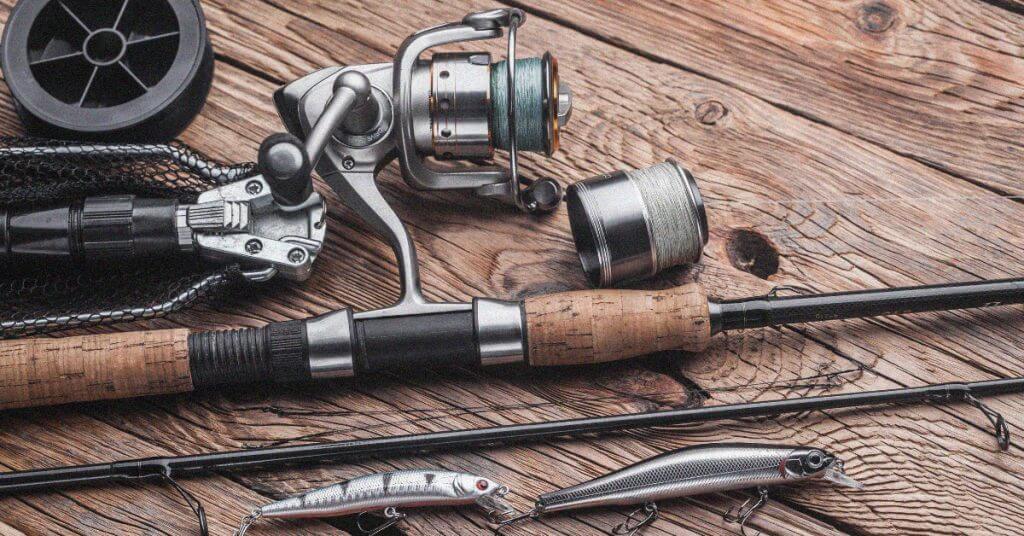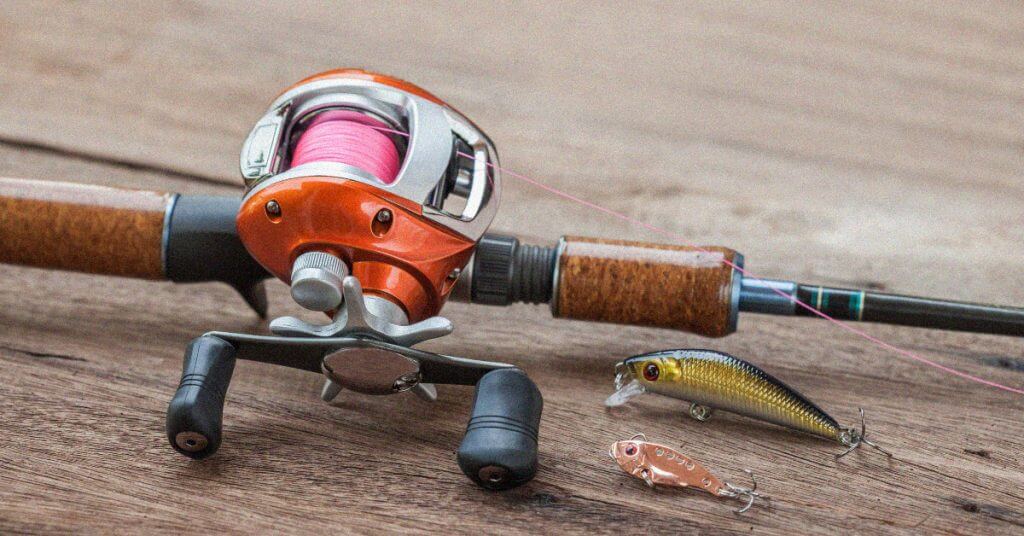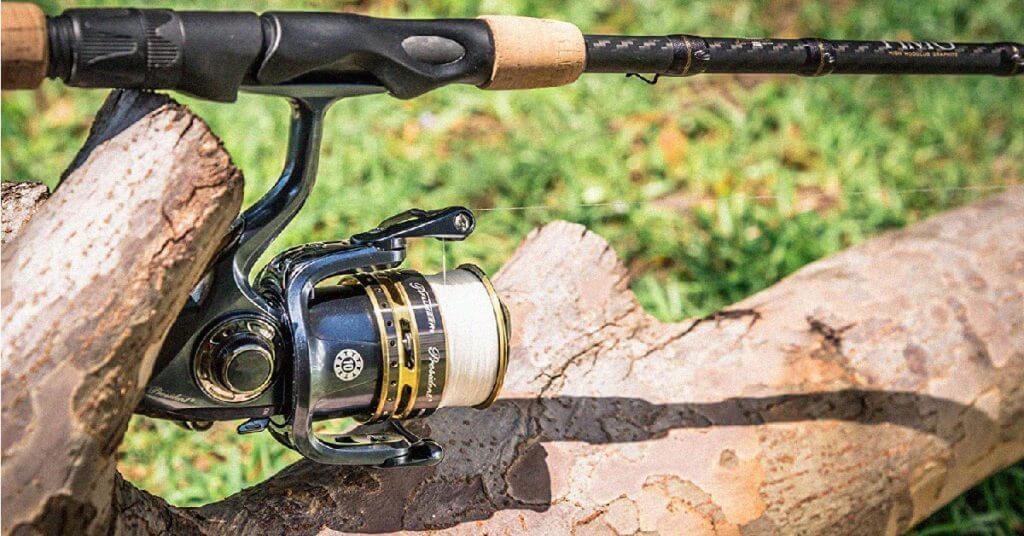Many people falsely assume that spinning reels are only used by anglers who lack the know-how to cast a baitcaster. However, the experienced anglers not only know what lure to throw but also the most effective rod and reel combo for that lure.
I’ve spent plenty of time on the water with both of these reels and the truth is, anyone could use a baitcaster and spinning reels aren’t just for beginners. In this guide, I’m breaking down the finer details to help you understand the baitcaster vs spinning reel debate.
Anglers.com writer and content creator Wes Littlefield gives us a few tips on choosing between a spinning reel and a baitcasting reel.
When You Should Use a Baitcasting Reel
A basic rule of thumb for deciding when to use a baitcaster is the heavier the tackle the more likely a baitcaster will be what you need to use. This is why you see so many saltwater fisherman use baitcaster reels. They need heavier lines and heavier lures and a baitcaster can handle the heavy tackle and larger fish much more easily than a spinning reel.
Another instance when you should use a baitcaster instead of a spinning reel is when casting distance matters. A spinning reel will not cast as far as a baitcasting reel will. Many bass fishing techniques require long casts so many professional bass fishermen can be seen with a baitcaster in their hands.
Lastly, a baitcaster should be used when pinpoint accuracy is needed to catch fish. This is another reason why bass fishermen often prefer a baitcaster to a spinning reel. Baitcasting rods and reels are much more accurate than spinning rods and reels. So when you need to place your lure in the perfect spot use a baitcaster!
When You Should Use a Spinning Reel
A Spinning reel should be used when you are planning to use light tackle. Crappie fishing requires ultra-light tackle. The heaviest line I use for crappie fishing is a six-pound test fishing line. Crappie jigs are lightweight. If I tried using a baitcaster with this lightweight fishing gear it would end in a bird’s nest tangled in the spool. Spinning reels shine when lighter lines and lighter lures are needed!
I mentioned earlier that most bass anglers prefer to use a baitcaster MOST of the time. There are a few instances when a spinning reel will be in their hands in place of a baitcaster. One such instance is when they are finesse fishing.
As I mentioned above spinning reels shine when the lightweight tackle is needed and finesse fishing requires the right line.
A spinning rod should be used when an 8lb test fishing line or smaller is needed to effectively catch fish. If your situation requires a 10lb test fishing line or larger, a baitcaster will most likely be the best choice.

Baitcaster vs Spinning Reel Pros and Cons
The pros of a baitcasting reel are many but do they outweigh the cons for your fishing situation?
Baitcaster Pros
- Higher Gear ratio. You will be able to reel the line in much quicker with a baitcaster.
- Can handle heavier fishing lines and lures.
- Bigger fish are easier to reel in.
- Many different lures can be used effectively with a baitcaster.
- Longer casting distance.
- More accurate casts.
- Greater line capacity.
- You look like you know what you’re doing when holding a baitcaster!
Baitcaster Cons
- Baitcasters are typically more expensive than a spinning reel.
- They require more experience to cast.
- They do not handle light fishing gear well.
Spinning Reel Pros
- Spinning reels are not as expensive as baitcasting reels.
- Spinning reels are easier to cast for anglers of all skill levels to fish with.
- Spinning reels have greater versatility than baitcasting reels. Many different fishing techniques can be done with a spinning reel.
- They make using lightweight fishing gear more enjoyable.
Spinning Reel Cons
- They have lower gear ratios, making them slower to reel in.
- Spinning reels do not cast as far as a baitcaster.
- They do not handle big fish as well as a baitcaster.
- Less accurate casts.
- Less line capacity.

Lure Selection for a Spinning Reel vs Casting Reel
Choosing the right lure can be the difference between getting bite after bite or not getting a bite at all. Choosing the correct rod and reel can be the difference between getting the fish into your hands or telling another story about “the one that got away”.
Spinning Reel Lure Selection:
So what lures should you use with a spinning reel? Truthfully, any lure can be used with a spinning reel. That does not mean certain lures will be as effective with a spinning reel as they will be with a baitcaster. Different types of fishing will require different fishing reels.
I will use a spinning rod and reel when I am using a light line and live bait. Freshwater species such as crappie and trout require light lines and small light lures such as SuperDuper spoons, small Mepps, or small rooster tails. This makes a spinning rod and reel my top choice when pursuing these species! Live bait such as minnows is often used to catch crappie on a spinning reel.
When bass fishing finesse tactics using soft plastics are often most effective with spinning tackle.
Casting Reel Lure Selection:
Similar to the spinning reel, most lures can be thrown using a casting reel. However, certain lures stand out when using a baitcaster and other lures do not.
Crankbaits and topwater lures are some that stand out when using a baitcaster. They often require long accurate casts and this is where a casting rod and reel shines.
Spinnerbaits, vibrating jigs, Texas rigged soft plastics, and Carolina rigged soft plastics are several other lures that most angles throw using a baitcaster.
Why Use a Baitcaster vs a Spinning Reel
As I’ve mentioned above a spinning reel is great for beginners as well as more experienced anglers. A baitcaster requires the angler to develop a new skill. That skill is well worth taking the time to develop!
As you can tell by the pros and cons list I tend to favor a baitcaster, specifically when targeting bass. However, I have caught countless fish on a spinning reel. Whether I’m fishing from a boat, my kayak or the bank does not determine which rod and reel combo I choose. The factors that most affect my decision are the fishing technique, weight of the fishing line and lure, and necessity of casting accuracy/distance.
Spinning Reel Vs Baitcaster for Trolling
Trolling is one of my favorite ways to catch a variety of fish. I have caught catfish, walleye, northern pike, white bass, largemouth, and smallmouth all while trolling. A spinning reel has caught most of those fish but now I prefer to use a baitcaster.
The main reason I want a baitcaster in my hands while trolling is due to comfort. In my opinion, holding a baitcaster is far more comfortable than holding a spinning reel for an extended time. Especially, with the resistance from the lure, you feel while trolling.
I also like the higher gear ratio that baitcasting reels offer so you can get the fish to the boat as quickly as possible. I can’t begin to count the times I’ve allowed slack in the line while stopping the boat after a bite and the fish gets off. Having a higher gear ratio helps to lessen this problem.
The Truth
The truth is you can catch fish with both types of reels. When we compare baitcaster vs spinning reels, they are clearly too very different ways to fish but one is not “better” than the other.
I do believe if one is going to be a serious angler both reels should be used depending on the fishing technique. For beginners, start with a spinning reel. Once it has become second nature to properly use then develop the skill with a baitcaster.
This will allow you to have that many more options when fishing and we all need more options to catch more fish!
You should now know when to use a baitcaster vs a spinning reel. Get to the water and catch more fish!




